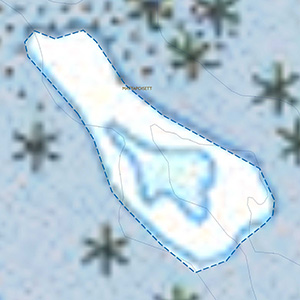Important Bird Area Sites in Massachusetts
Important Bird Area: Ram Island
Site Summary
Nominated By
Ian Nisbet
Size
2.5 acres
Towns and Counties
Marion; Bristol
Ownership
MassWildlife
Major Habitats
20% salt marsh, 60% coastal beach, 20% marine/tidal
Land Use
nature & wildlife conservation/land trust, research
Serious Threats
excessive soil erosion and degradation
Minor Threats
predators
IBA Criteria
- Category 1: Sites important for long-term research and/or monitoring projects that contribute substantially to ornithology, bird conservation, and/or education.
- Category 2: Sites containing assemblages of species characteristic of a representative, rare, threatened, or unique habitat within the state or region.
- Category 4: Seabirds: The site regularly supports 300 or more pelagic seabirds and/or terns or 3,000 or more gulls at one time. A pelagic site is the actual location being used by seabirds (e.g., Stellwagen Bank) and not the location from which an observer counts seabirds (e.g., Provincetown). Smaller concentrations of less common gulls such as Laughing or Bonaparte's gullswill be considered. Human-made food sources for gulls such as landfills and sewage outflows will not be considered. The designation "seabirds" includes shearwaters, storm-petrels, fulmars, gannets, jaegers, and alcids.
- Category 5: Sites regularly holding significant numbers of species of high conservation priority in Massachusetts.
Site Description
Ram Island, located 0.8 km southeast of Mattapoisett Neck, Mattapoisett, is composed of eroded glacial till, surrounded by scattered boulders. There is a tidal pond in the center with a small area of low-grade salt marsh, and a storm beach of gravel and shell. Other substrates include cobbles, boulders, and soil. There is a cover of herbaceous vegetation growing in some areas to over 6 1/2 feet tall in summer and some areas with dense Beach Rose. The island is exposed to wave action from the south and is washed over in hurricanes and occasional winter storms. Common and Roseate terns have been known to breed on the island since the 1930s.
Current Conservation Status
Ram Island is subject to predation by Great Horned Owls and Great Black-backed Gulls, which take fledgling terns. The island has steadily been eroded and lost elevation over the past 30 years, resulting in a steady loss of available nesting areas for terns. Tern populations were damaged in the 1970s to 1990s by PCBs released into New Bedford Harbor, so they are eligible for restoration under the Comprehensive Environmental Response, Compensation, and Liability Act (CERCLA).
Ornithological Significance
Ram Island supports 40 percent of the Massachusetts population of Roseate Tern (20 percent of the continental population); 20 percent of the Massachusetts population of Common Tern; and up to 12 nesting pairs of Willets (since 1995) and 5 pairs of American Oystercatchers (since 1995). This IBA is one of a small number of islands suitable for seabird nesting in southern Massachusetts (Buzzards Bay). A long-term research program with ongoing intensive studies of terns is continuing there.
Other Flora or Fauna of Significance
None listed.
Data Sources
None listed.




